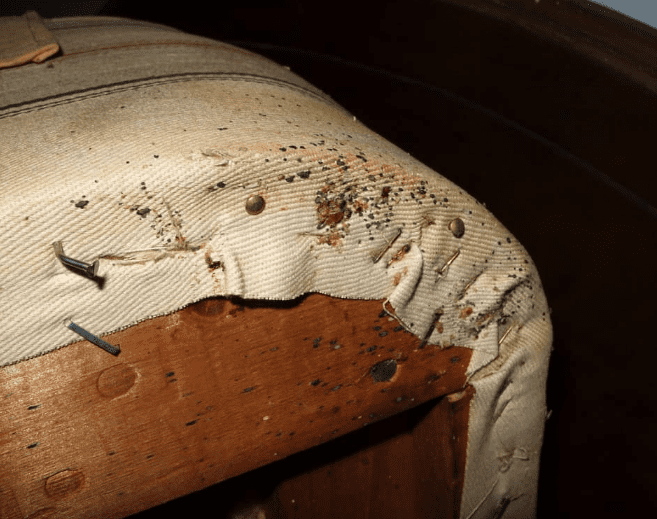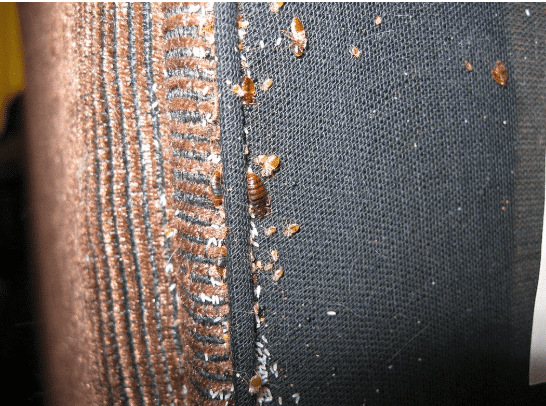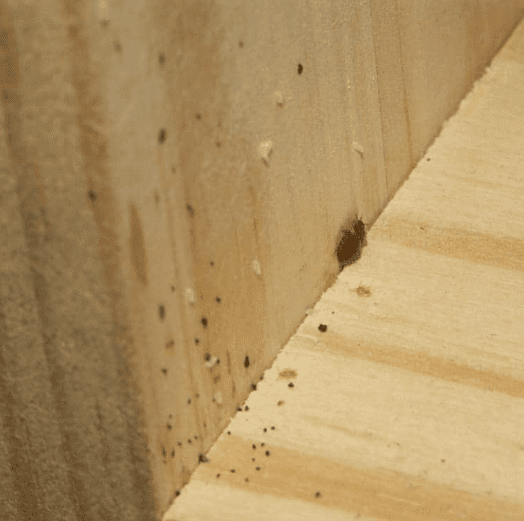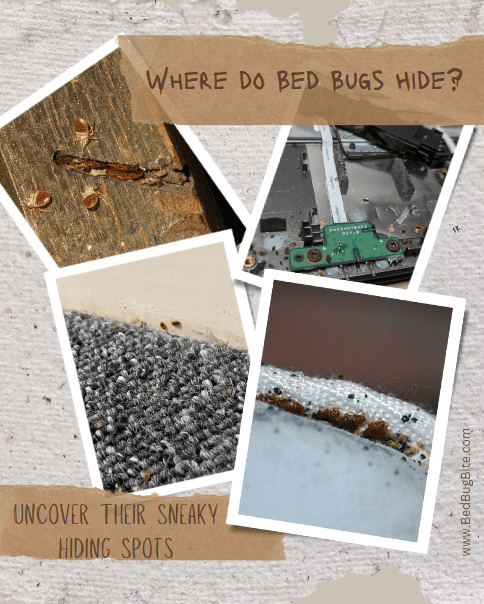Introduction
Imagine, for a moment, the sanctuary that is your bedroom—a place of rest and relaxation. Now, picture an invisible threat undermining that very peace: BED BUGS. These tiny invaders are not just bothersome for their itchy bites. Their true power lies in their stealth. Understanding the habitats of bed bugs is critical, and here’s why. Firstly, these critters have a penchant for human environments. Your comfortable nook? That’s prime real estate for bed bugs. But it’s not the only place they go. So, Where Do Bed Bugs Hide?
Secondly, these pests possess an astonishing ability to adapt, silently flourishing until their numbers are overwhelming. This guide offers a deep dive into the secretive world of bed bugs, shining a spotlight on their favored hideaways. With this knowledge, you’re not just learning about them; you’re preparing to fight them and, ultimately, conquer them. So, if ensuring a bed bug-free haven is your aim, you’re in the right place. Dive in and discover how to reclaim your peaceful nights.
Get to know the Enemy: Bed Bugs
Bed bugs are strategic in their approach to survival. Their behavior is a testament to millennia of evolution, finely tuning their instincts to prioritize two things: feeding and reproducing. Unpleasant as it may sound, humans are the perfect hosts for these night time nuisances. Our body heat, the carbon dioxide we exhale, and the tiny blood vessels close to our skin make us ideal targets. But there’s more to bed bug behavior than just their appetite.
Their nocturnal nature ensures they primarily operate under the cloak of darkness, further safeguarding them from detection. This means when you’re most vulnerable, in the depth of sleep, bed bugs are most active. A scary thought, isn’t it? Yet, by getting to know their habits, we’re not merely grossing ourselves out. We’re arming ourselves with the information needed to outsmart them. The key to tackling any issue is understanding its root. In the world of bed bugs, that means delving deep into their daily routines.
Common Bed Bug Hideouts in Bedrooms
Where Do Bed Bugs Hide? When we think of bedrooms, we often envision a personal retreat—a space of relaxation and comfort. Yet, for bed bugs, your bedroom represents a haven of opportunities. Let’s explore their most frequented spots:

- Mattresses and Box Springs: The closeness to their next meal—yes, that’s you—makes mattresses a bed bug favorite. The tiny crevices, seams, and folds provide perfect nooks for them to hide and lay their eggs. Remember those pesky little tags most people ignore? Bed bugs don’t. They see them as a cozy hideout.
- Bed Frames and Headboards: Intricate designs and wooden frames might add aesthetic appeal to your bedroom, but they also offer numerous hiding spots for bed bugs. Cracks, gaps, and even the space behind the headboard become their clandestine sanctuaries.
- Bedding and Linens: It’s not just the mattress they adore. Pillowcases, blankets, and the underside of fitted sheets can often harbor these pests. Their small size allows them to tuck themselves away effortlessly, making detection a challenge.
Deciphering the common hideouts of bed bugs in bedrooms is the first crucial step to an effective purge. By understanding their tendencies and habitats, we can initiate targeted measures, ensuring that our bedrooms remain the restful sanctuaries they were always meant to be.
Beyond the Bedroom: Other Prime Hideouts
While bedrooms are undeniably a hotspot for bed bug activity, these crafty critters don’t limit themselves to just one area of the home. Their adaptability leads them to seek refuge in various places, many of which might surprise even the most vigilant homeowners.

- Living Room Furniture: The plush comfort of sofas and recliners attracts more than just humans seeking relaxation. Beneath the cushions, in seams, folds, and even zipper areas, bed bugs find refuge, waiting patiently for their next unsuspecting victim.
- Carpets and Rugs: These soft furnishings might tie a room together, but they also present a labyrinth of fibers for bed bugs to navigate. Edges of carpets, particularly those tucked under heavy furniture, can become prime real estate for these pests.
- Wall Hangings and Decor: Think those picture frames and wall-mounted decorations are safe? Think again. The space behind these items provides an undisturbed haven for bed bugs, making them an unexpected hideout.
Venturing beyond the bedroom and inspecting these common areas can be the difference between a minor infestation and a full-blown bed bug crisis. With a keen eye and thorough examination, one can stay a step ahead of these elusive invaders.
Detection: How to Identify Bed Bug Infestations Early
Detecting bed bugs early is half the battle won. These pests may excel in stealth, but they’re not entirely invisible. With a vigilant approach and keen observation, you can spot the telltale signs before they become a major concern.

- Physical Sightings: While they are experts at hiding, occasionally, you might spot a bed bug out in the open, especially if you’re searching diligently. They are reddish-brown, oval, and roughly the size of an apple seed.
- Bite Marks: Waking up with itchy red welts or a localized rash? Bed bugs feed on human blood, and their bites can leave behind distinct patterns, often in lines or clusters.
- Excrement and Blood Stains: Dark or rusty spots on sheets, mattresses, or nearby walls can be an indication of bed bug excrement. Additionally, tiny blood smears might be present after they’ve had a meal.
- Molted Skins: As bed bugs grow, they shed their skins, usually five times before reaching maturity. Discovering these light-yellow, shell-like fragments can be a clear sign of their presence.
By familiarizing ourselves with these signs, we empower ourselves to take swift action, potentially saving time, money, and stress. Always remember, early detection can make the eradication process significantly more manageable.
Source: How to Find Bed Bugs | US EPA
Combatting the Crisis: Effective Measures to Eradicate Bed Bugs
Once you’ve identified a bed bug infestation, swift and decisive action is important. These pests multiply rapidly, so time is of the essence. But where should you begin? Let’s unpack some proven strategies to reclaim your home from bed bugs:
- Professional Pest Control: While DIY methods can be tempting, calling in experts often ensures a thorough and lasting solution. Pest control professionals possess the tools and expertise to tackle infestations at any stage, from early detection to widespread invasions.
- Heat Treatment: Bed bugs are notoriously resilient, but they can’t withstand extreme temperatures. Washing infested bedding and clothing at a high temperature can effectively kill them. For larger items, professional heat treatments might be necessary.
- Seal and Protect: Prevention is always better than cure. Invest in bed bug-proof mattress and pillow encasements. Not only can they prevent future infestations, but they also trap any existing bugs inside, eventually causing them to perish.
- Regular Inspections: After the initial eradication, routine inspections are crucial to prevent a resurgence. Regularly check typical hiding spots and consider periodic professional inspections as a preventive measure.
Tackling a bed bug infestation can be daunting, but with the right strategies in place, victory is attainable. By combining informed decision-making with persistent action, you can ensure a comfortable, bed bug-free environment for you and your loved ones.
Misconceptions and Myths: Busting Bed Bug Falsities
In the realm of pest infestations, few subjects are as rife with misconceptions as bed bugs. Misinformation can lead homeowners astray, resulting in ineffective treatments or making existing problems worse. Let’s unwrap some of the most pervasive bed bug myths:
- Cleanliness Deters Bed Bugs: Contrary to popular belief, bed bugs are not exclusively attracted to untidy environments. While a clean home can make detection easier, these pests are primarily lured by the presence of humans, not dirt.
- Bed Bugs Transmit Diseases: Although the thought of any insect feeding on your blood is unsettling, there’s a silver lining. Bed bugs, as of current research, are not known to transmit diseases to humans.
- They Only Live in Beds: Despite their name, bed bugs aren’t exclusive to beds. As we’ve discussed, they can hide in various places, from furniture to wall hangings.
- All Bites are Bed Bug Bites: While their bites are distinctive, they can sometimes be mistaken for other insect bites, like those from mosquitoes or fleas. It’s essential to consider other signs of their presence before drawing conclusions.
Dispelling these myths is pivotal in approaching bed bug infestations with clarity and confidence. By basing our actions on facts, rather than fallacies, we can adopt more effective strategies to address and prevent these pesky invaders.
In Conclusion: The Road to a Bed Bug-Free Home
Dealing with a bed bug problem might seem really overwhelming. These tiny bugs are good at hiding and multiplying fast, which makes them tough to handle. But don’t worry, the more you understand them, the better you can fight back. Learning about where they live, how they act, and the wrong ideas people have about them will help you make a strong plan.
Just remember, if you act quickly and use what you know, you can start to get control over the situation. It doesn’t matter if you’re already dealing with these bugs or trying to stop them from coming, it’s important to always be watchful and get help from experts when you need it. If you keep trying and use the right methods, you can make your home free of bed bugs. It might be hard, but it’s definitely possible.




